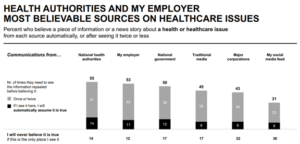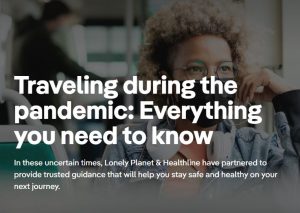Why and how to infuse more empathy in your health care marketing
Caring for your fellow human beings is also what happens when you put the consumer first.

Lately, everywhere I look—research studies, articles and books—the word “empathy” keeps popping up. It has me thinking about how most health care marketing and communications could really benefit from a much heftier dose of it.
All too often, health care marketing communications are about the organization behind them and what they want to say instead of about the audience on the receiving end and what they need to hear and experience. (Yes, it’s possible to find the sweet spot that offers both.)
It can be tempting for even the savviest healthcare marketers to water authentic expressions of feelings down to benign platitudes. (You’ve seen all the sound-alike COVID-19 TV spots.) When your messages get watered down, disconnection results instead of the meaningful, resonant connection you seek.
And that leaves you no different than your competition. Here’s why that’s true, and what to do about it:
Consumer trust in brands has collapsed.
Consumer trust in brands plummeted between 2016 and 2018, according to Gartner research. “Ambient trust”—the degree to which people feel the society they live in is one where the institutions they rely on are competent and reliable—dropped across the board for U.S. consumers. During this time, trust in big brands fell 19% for all U.S. consumers, 31% for African-American consumers, and a whopping 36% for Millennials.
While trust itself has tanked, the importance of it to brand choice is unsurprisingly high. In the most recent Edelman Trust Barometer, 81% of consumers said they “must be able to trust the brand to do what is right” to decide to buy it. Note that they don’t just need to trust it to be a quality brand—it needs to do the right thing, too.
So, empathy alone won’t get you all the way to trust, but it is absolutely foundational to becoming a brand that people potentially can trust.
Empathetic access is what healthcare consumers are seeking.
In recent research from Klein and Partners, 1 in 5 consumers said they would switch healthcare providers if their current provider lacked empathy for their current situation. How empathetic are your providers? And how empathetically does your brand speak and behave?
On the most fundamental level, we all want and need to be seen and heard. Thinking back to Psychology 101, it’s the “belonging” and “esteem” elements from Maslow’s Hierarchy of Needs. If a brand or an organization does not speak and behave in a way that demonstrates that they see patients, hear them and understand their point of view, why would they want to possibly engage with them? I wouldn’t. Not would you. Nor would your patient. They would seek care elsewhere or bypass care altogether and remain untreated.
What is empathy? And how do we create it?
Here’s how Psychology Today defines it:
Empathy is the ability to recognize, understand, and share the thoughts and feelings of another person (or animal or fictional character). Developing empathy is crucial for establishing relationships and behaving compassionately. It involves experiencing another person’s point of view, rather than just one’s own, and enables prosocial, or helping behaviors that come from within, rather than being forced.
Empathy, then, comes from insight—the capacity to gain an accurate and deep intuitive understanding of a person or thing, which is why the most effective work starts with gathering clear insights into your intended audiences. Because, again, to connect with people, your communication needs to start with not just what you want to say, but what your audience needs to hear.
Define your brand story.
In his book “Building a Story Brand,” Donald Miller suggests treating your customer—not your brand—as the hero of the story. The brand is simply their guide. The “Story Brand” model is a simple, helpful tool. It can be used to outline a narrative for a brand, a service line, etc.
In the book, Miller further explains: “The only reason our customers buy from us is because the external problem we solve is frustrating them in some way. If we can identify their frustration, put it into words, and offer to resolve it … something special happens. We bond with our customers because we’ve positioned ourselves more deeply into their narrative.” Identifying their frustrations is empathy.
Build empathy statements for everything you do.
Here are a couple of examples:
In this time of COVID-19, marketers may be tempted to say something generic like “We live in uncertain times” that consumers have heard 1,000 times. Instead, marketers should consider saying something empathetic like “We know you may be feeling anxious or afraid right now.” The audience is much more likely to perceive the brand as sincere and trustworthy and to feel seen and heard, and they’ll likely be pleasantly surprised to hear a brand speaking to them in this very human way.
If a health system is creating messaging for a bariatrics campaign, it should consider something like: “We understand how difficult weight loss is, and how frustrated and hopeless you may be feeling about it.” Potential patients will be much more likely to feel they can turn to the system without being judged because it has shown that it “gets” them.
You get the idea, right? Super simple. And unfortunately, often overlooked.
Empathy is a simple key to connection.
A spoonful of sugar may make the medicine go down, as Mary Poppins suggested; however, sugarcoated platitudes will not help a patient or a would-be patient feel understood, respected and able to trust. Only genuine empathy—built on true understanding and insight—will create the connection brands seek. It’s a small thing that can go a very long way towards building brand credibility and boosting patient acquisition and patient retention efforts.
Sue Spaight is director of insights and strategy for Core Health, Core Creative’s specialized marketing practice.






